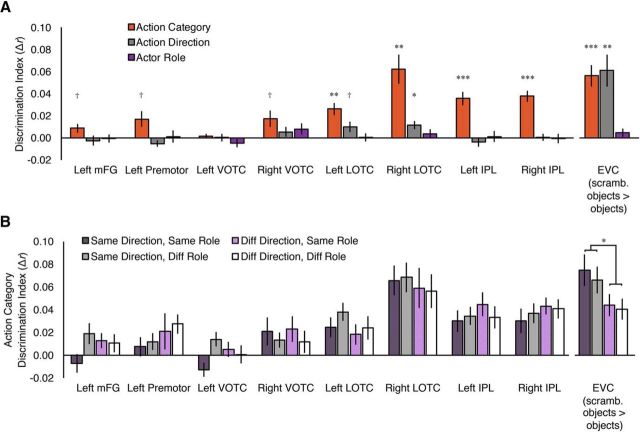Figure 3.
Analyses for action category specificity and generalization for the Video Format stimuli in cross-format ROIs. EVC, defined by a functional localizer as scrambled objects > intact objects, was also included for comparison with cross-format ROIs. A, Decoding for action category, action direction, and actor roles. Discrimination index values shown here are average same minus average different correlation values for action category, action direction, and actor roles, respectively, collapsed over the other factors. Action direction could be decoded in left and right LOTC and EVC, whereas the actor role code could not be decoded in any regions. Action category could be decoded in most regions, though we note that this is necessitated by our ROI selection procedure, which was based on cross-format action category decoding using the same data. B, Action category discrimination indices for the cross-format ROIs for each combination of action direction (same or different) and actor roles (same or different); that is, the orange Action Category bars in A split by the other factors. Only significant differences between action category decoding are indicated. Action category representations were largely invariant to the systematically manipulated properties of the video stimuli in cross-format ROIs, whereas in EVC, action category decoding was significantly better when action direction was the same versus different. †p < 0.055, uncorrected; *p < 0.05; *p < 0.05, **p < 0.01, ***p < 0.001, corrected for multiple comparisons across the nine ROIs. Error bars indicate SEM.

